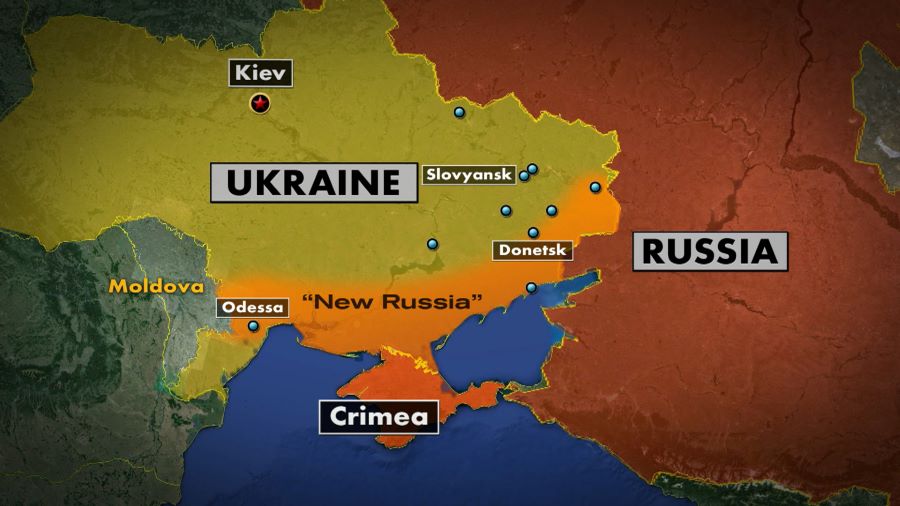The Nepal Stock Exchange (NEPSE) witnessed a devastating trading session on Thursday, October 16, 2025, as the benchmark index crashed by 18.40 points to settle at 2,487 points—marking the lowest closing level since October 13, 2024. This alarming downturn continues a worrying pattern of consecutive declines that has rattled investor confidence and eroded billions in market capitalization across Nepal’s financial sector.
The persistent downward trend in recent days has created significant anxiety among retail and institutional investors, as market sentiment deteriorates amid broader economic concerns and regulatory uncertainties. The sharp decline underscores the fragile nature of Nepal’s equity market and raises critical questions about recovery prospects in the coming weeks.
Breaking Down Thursday’s Market Catastrophe
Overwhelming Sell-Off Dominates Trading Floor
Out of 251 companies actively traded on Thursday, a staggering 197 stocks recorded price declines, while only 45 companies managed to post gains. Nine stocks remained unchanged, reflecting the widespread negative sentiment gripping the market. This lopsided ratio of losers to gainers—approximately 4.4:1—demonstrates the intensity of selling pressure that overwhelmed even fundamentally strong companies.
The breadth of the decline indicates systemic concerns rather than isolated sector-specific issues. When nearly 78.5% of traded companies experience price drops simultaneously, it signals deep-rooted investor pessimism that transcends individual stock performance or company fundamentals.
Trading Volume Shows Mixed Signals
Despite the sharp index decline, trading volume actually increased marginally from the previous session. Thursday’s turnover reached Rs 3.27 billion (Rs 327 crores), up from Wednesday’s Rs 3.10 billion. This unusual combination of increased volume alongside falling prices suggests active liquidation by investors seeking to exit positions, rather than a simple lack of buying interest.
The Nepal Stock Exchange has been experiencing declining trading volumes over recent sessions, making Thursday’s volume uptick particularly noteworthy. However, market analysts caution that higher volume during a downturn often indicates capitulation rather than healthy market activity, potentially signaling further weakness ahead.
Sectoral Analysis: Banking Barely Survives While Others Crumble
Banking Sector Shows Marginal Resilience
In a rare bright spot during Thursday’s market carnage, the banking sub-index managed to edge up by 0.02 percent—the only sector to close in positive territory. This microscopic gain reflects the defensive nature of banking stocks during periods of market stress, as investors seek relative safety in established financial institutions with stable dividend yields.
However, the banking sector’s minimal gain provides little comfort when viewed against the backdrop of widespread sectoral declines. The sector’s resilience may prove temporary if broader market weakness persists and economic growth concerns intensify.
Development Banks and Finance Companies Lead Decline
Development banks suffered the steepest losses, plunging 1.15 percent, followed closely by finance companies which dropped 1.28 percent. These mid-tier financial institutions are particularly vulnerable to liquidity concerns and credit quality deterioration during economic slowdowns.
The microfinance sector also experienced significant pain, declining 0.73 percent. Given that microfinance institutions typically serve Nepal’s most economically vulnerable populations, their stock performance often serves as a leading indicator for grassroots economic conditions.
Key Sectoral Performance Breakdown
- Hydropower: Down 1.03% – Energy stocks continue facing headwinds despite Nepal’s renewable energy potential
- Investment: Down 0.49% – Investment companies struggle amid reduced market activity
- Life Insurance: Down 0.89% – Insurance sector faces premium collection challenges
- Manufacturing/Processing: Down 0.73% – Production sector reflects broader economic slowdown
- Non-Life Insurance: Down 0.53% – General insurance companies show relative stability
- Others: Down 2.21% – Worst-performing category signals widespread investor exodus
- Trading: Down 0.39% – Trading companies face margin pressure
Top Performers and Biggest Losers: Market Winners and Casualties
Himalayan Power Partner Leads Limited Gainers
Himalayan Power Partner emerged as Thursday’s top performer, surging 9.93 percent to lead the handful of companies that defied the negative trend. This substantial gain in an otherwise bearish market suggests company-specific positive developments or technical buying pressure.
Other notable gainers included:
- Kalika Laghubitta (Microfinance): Up 5.69%
- Infinity Laghubitta (Microfinance): Up 3.89%
- Sagarmatha Lumbini General Insurance: Up 3.79%
The concentration of gainers in the microfinance and insurance sectors indicates selective bargain hunting by investors seeking value in oversold stocks with strong fundamentals.
Devastating Losses Hit Major Companies
The casualty list from Thursday’s trading tells a sobering story of value destruction:
- Samaj Laghubitta: Down 10% (maximum single-day loss)
- Unique Nepal Laghubitta: Down 7.33%
- Samata Gharelu Laghubitta: Down 6.25%
- Upper Syangja Hydropower: Down 4.87%
- Nepal Reinsurance: Down 4.21%
Nepal Reinsurance’s significant decline is particularly concerning given its role as a leading reinsurer in the country. The stock also featured among the day’s most actively traded companies, suggesting widespread selling rather than isolated transactions.
Most Actively Traded Stocks: Where the Action Happened
Thursday’s trading activity concentrated in five key stocks that dominated volume:
- Muktinath Bikas Bank – Development banking sector leader
- Nepal Reinsurance – Insurance heavyweight facing selling pressure
- Shivam Cement – Manufacturing sector representative
- NRN Infrastructure – Infrastructure development company
- Himalayan Reinsurance – Secondary insurance market player
The prominence of financial sector stocks (banks and reinsurance companies) in the most-traded list reflects investor focus on Nepal’s core economic institutions. Nepal Reinsurance and Himalayan Reinsurance have consistently appeared among the most-traded companies during this period of market volatility.
Understanding the Broader Context: Nepal’s Stock Market Challenges
Historical Perspective on Market Volatility
Nepal’s stock market has experienced several boom-and-bust cycles throughout its history. The current downturn echoes previous market crashes that eroded investor wealth and shook confidence in the equity market as a viable investment vehicle.
Recent market behavior shows lack of sustained enthusiasm among investors, with gains quickly followed by sharp reversals. This volatility pattern makes strategic investment planning extremely challenging and deters long-term capital formation.
Regulatory and Structural Issues
Nepal’s stock market faces unique structural challenges that amplify volatility and hinder sustainable growth:
- Limited market depth: Relatively few institutional investors means retail sentiment dominates
- Liquidity constraints: Nepal Rastra Bank’s policies on margin lending and share collateral restrict market liquidity
- Regulatory uncertainty: Frequent policy changes create unpredictable investment environment
- Corporate governance concerns: Past scandals have damaged investor confidence
For comprehensive information about Nepal’s stock market infrastructure, visit the Nepal Stock Exchange official website.
Impact of Macroeconomic Factors
Nepal Rastra Bank has been absorbing liquidity from the market while managing increased liquidity in banking institutions. These monetary policy actions, while intended to maintain financial stability, can inadvertently pressure equity valuations and reduce available capital for stock market investments.
Additionally, recent economic shocks—including natural disasters, political transitions, and global economic headwinds—have created an uncertain investment climate that weighs heavily on market sentiment.
Technical Analysis: Support Levels and Market Outlook
Critical Support Zone Approaching
The NEPSE index’s decline to 2,487 points brings it dangerously close to psychological support at the 2,450-2,475 level. A break below this zone could trigger accelerated selling as stop-loss orders activate and technical traders turn bearish.
Technical indicators like the Relative Strength Index (RSI) have been showing oversold conditions, with patterns suggesting potential bullish divergence. However, oversold conditions can persist longer than expected during strong downtrends, and premature bottom-fishing can result in significant losses.
Volume Analysis Implications
The increase in trading volume during Thursday’s decline is a double-edged sword. While higher volume typically provides more reliable price signals, volume accompanying sharp declines often indicates distribution (selling by informed investors) rather than healthy price discovery.
Traders should watch for volume patterns in coming sessions. A reversal accompanied by surging volume would provide stronger confirmation of a genuine bottom, while continued high-volume selling would suggest further downside remains likely.
Expert Perspectives and Investment Strategies
What Market Analysts Are Saying
Financial experts emphasize caution during the current market environment. Many recommend:
- Reducing leverage: Avoiding margin trading until clearer trends emerge
- Focus on fundamentals: Investing only in companies with solid balance sheets and consistent earnings
- Diversification: Not concentrating holdings in single sectors or stocks
- Long-term perspective: Viewing current weakness as potential opportunity for patient investors
For detailed market analysis and daily updates, investors can reference resources at ShareSansar Nepal’s leading financial information portals.
Risk Management During Market Downturns
Investors navigating this challenging environment should implement robust risk management practices:
- Position sizing: Never allocate more than 5-10% of portfolio to any single stock
- Stop-loss discipline: Set predetermined exit points and honor them without exception
- Cash reserves: Maintain sufficient liquidity to capitalize on opportunities without forced selling
- Emotional control: Avoid panic selling at market bottoms or euphoric buying during rallies
Impact on Retail Investors and Market Participants
Wealth Erosion Concerns
The sustained market decline has eroded substantial wealth from retail investors who dominate Nepal’s equity market. Many individual investors entered the market during previous rallies at much higher price levels, and are now sitting on significant unrealized losses.
This wealth effect can have broader economic implications, as investor losses may translate to reduced consumer spending and decreased confidence in financial markets as savings vehicles.
Broker Community Challenges
Stock brokers face their own challenges during prolonged market weakness. Reduced trading volumes and declining investor participation directly impact commission revenue, while operational costs remain fixed. Some smaller brokerage firms may face sustainability challenges if market conditions don’t improve.
Government and Regulatory Response
Securities Board’s Role
The Securities Board of Nepal (SEBON) faces pressure to implement measures that can stabilize markets without distorting price discovery or creating moral hazard. Potential policy interventions being discussed include:
- Relaxation of certain trading restrictions
- Enhanced market surveillance to prevent manipulation
- Investor education initiatives to promote long-term investing
- Review of margin lending policies in coordination with Nepal Rastra Bank
Ministry of Finance Considerations
The Ministry of Finance monitors stock market developments as part of broader economic management. Significant market declines can impact government borrowing costs, public sector divestment plans, and overall economic sentiment.
For official economic data and policy information, visit the Ministry of Finance Nepal.
Comparison with Regional Markets
South Asian Market Context
Nepal’s market decline occurs against a backdrop of mixed performance in South Asian equity markets. While some regional markets have shown resilience, Nepal’s relatively small and isolated market often moves independently of broader regional trends.
The country’s limited integration with global financial markets provides both insulation from international shocks and constraints on access to foreign capital and diversification opportunities.
Looking Ahead: Recovery Prospects and Key Catalysts
Potential Positive Catalysts
Several factors could support market recovery:
- Economic growth revival: Improved GDP growth forecasts and business activity
- Monetary policy easing: Nepal Rastra Bank loosening restrictive policies
- Corporate earnings improvement: Better-than-expected quarterly results
- Political stability: Reduced uncertainty in government policies
- Foreign investor interest: Increased attention from international investors
Risk Factors to Monitor
Conversely, several risks could extend or deepen the current downturn:
- Global economic slowdown: International recession impacting remittances and trade
- Domestic political instability: Policy uncertainty deterring investment
- Banking sector stress: Non-performing loan increases affecting financial stability
- Natural disasters: Nepal’s vulnerability to earthquakes and flooding
- Regulatory tightening: Further restrictive measures from authorities
Investor Takeaways and Action Items
For Current Market Participants
If you’re already invested in Nepal’s stock market:
- Review your portfolio: Assess whether holdings still align with investment thesis
- Rebalance if necessary: Consider trimming positions that have become disproportionately large
- Avoid panic: Remember that markets are cyclical and downturns eventually reverse
- Focus on quality: Prioritize companies with strong fundamentals over speculative plays
For Prospective Investors
Those considering entering the market should:
- Wait for stabilization: Look for signs of trend reversal before committing significant capital
- Start gradually: Use dollar-cost averaging rather than lump-sum investment
- Do homework: Research companies thoroughly before investing
- Seek advice: Consult with licensed financial advisors when appropriate
Conclusion: Navigating Uncertain Times in Nepal’s Stock Market
The NEPSE’s 18.40-point crash to 2,487—the lowest level in a year—represents a critical juncture for Nepal’s equity market. The overwhelming number of declining stocks, sectoral weakness across most categories, and persistent downward momentum signal significant challenges ahead.
However, market history teaches that periods of maximum pessimism often precede the strongest recoveries. Patient, disciplined investors who maintain proper risk management and focus on fundamental value may find the current environment creates compelling long-term opportunities.
As Nepal’s economy continues evolving and regulatory frameworks mature, the stock market will remain a critical component of capital formation and wealth creation. Understanding current challenges while maintaining perspective on long-term potential represents the balanced approach investors need to navigate these turbulent times.
The coming weeks will prove crucial in determining whether the market finds support at current levels or continues its descent toward new lows. Regardless of near-term direction, investors who maintain discipline, manage risk appropriately, and stay informed about market developments will be best positioned to capitalize on eventual recovery.



















Comments